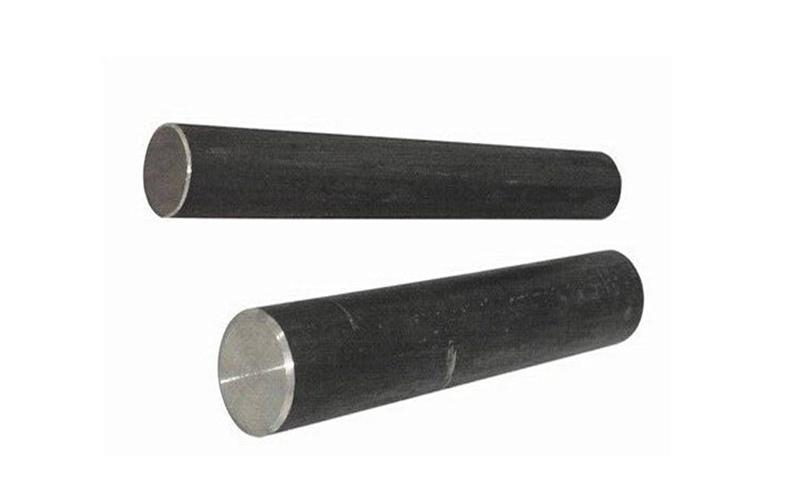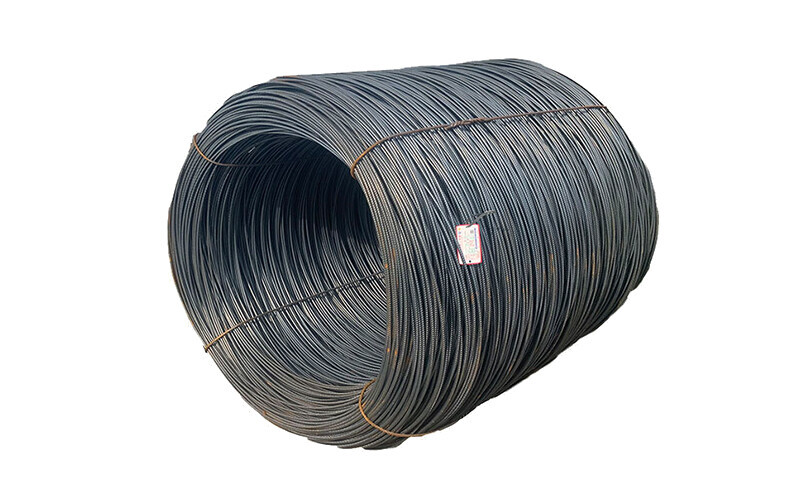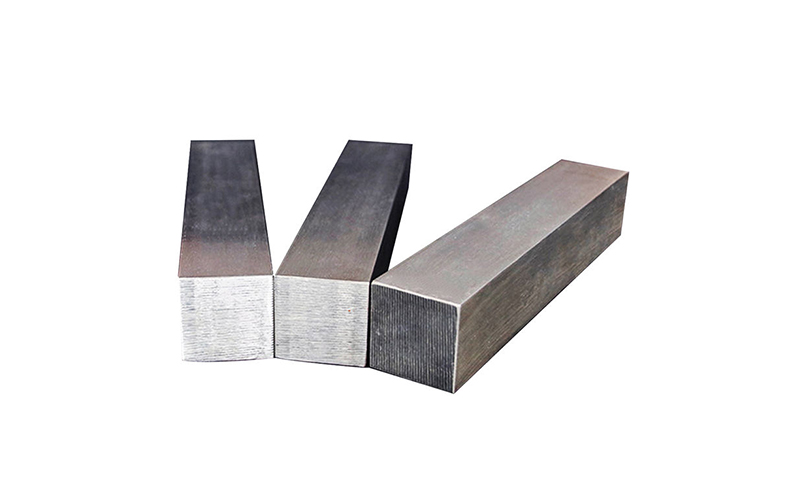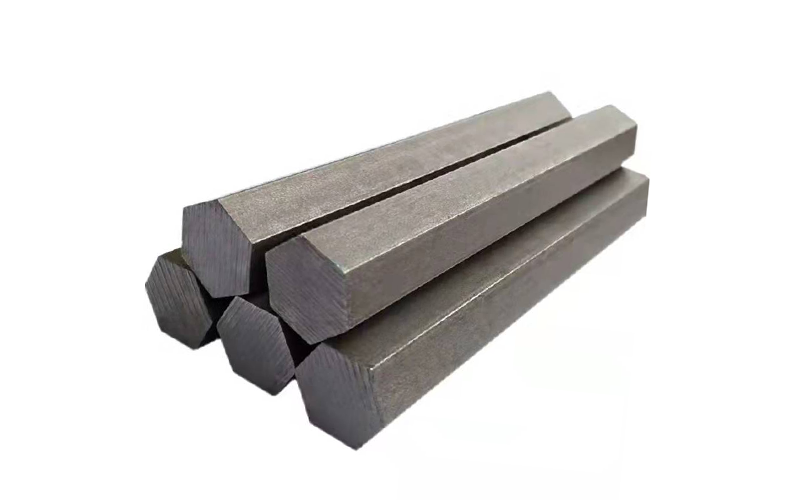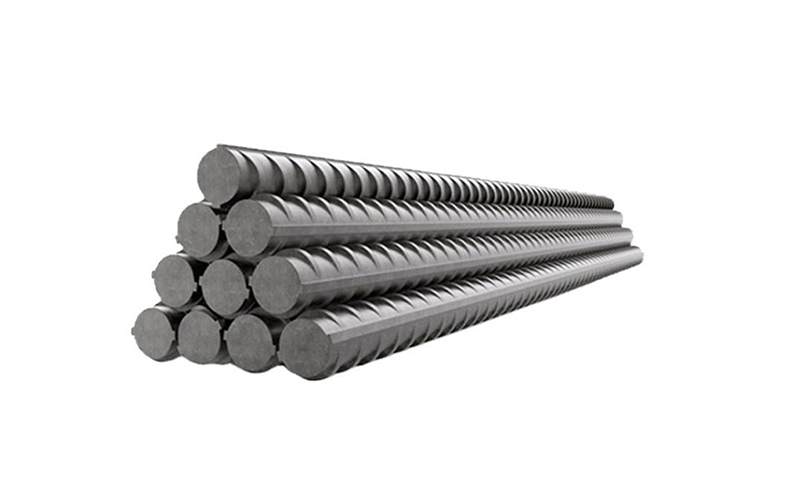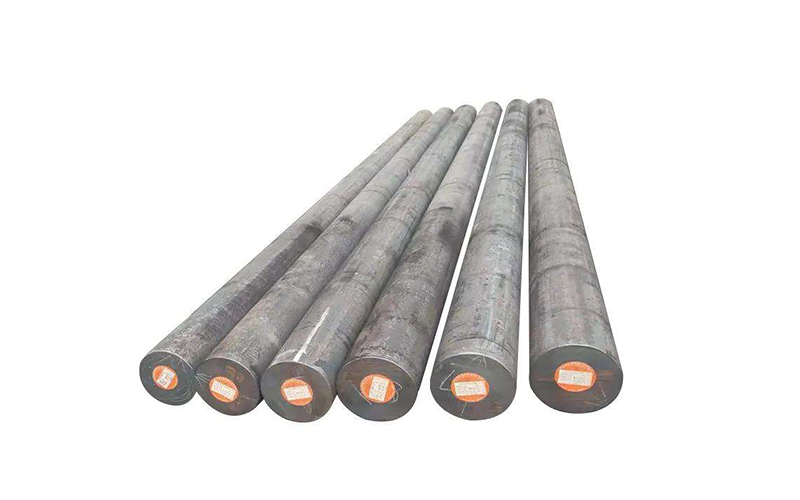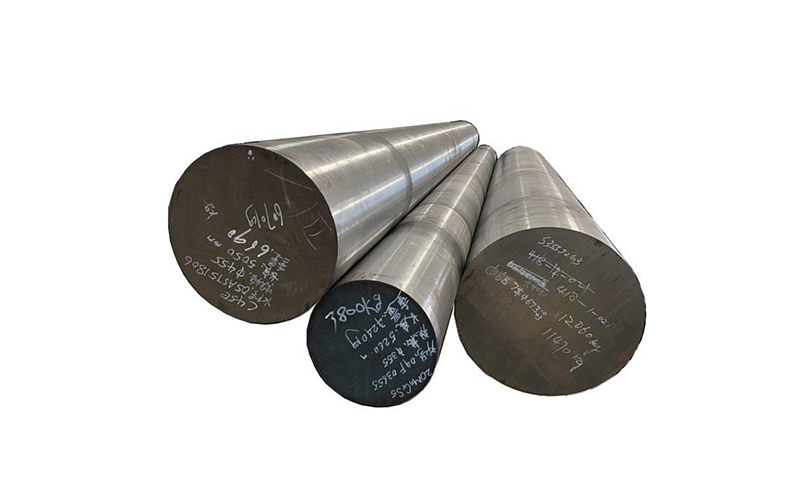 Carbon steel barCarbon steel bar is a kind of general-purpose steel bar that offers excellent formability and weldability, being used in a wide variety of applications including auto manufacturing, shipbuilding, aerospace industry, petrochemical plants, auto-power and wind-engine, metallurgical machinery, precision tools, etc.
Carbon steel barCarbon steel bar is a kind of general-purpose steel bar that offers excellent formability and weldability, being used in a wide variety of applications including auto manufacturing, shipbuilding, aerospace industry, petrochemical plants, auto-power and wind-engine, metallurgical machinery, precision tools, etc. Carbon steel wireCarbon steel wire is made of carbon steel wire products, where the carbon content is usually between 0.08% and 0.60%, sometimes high carbon steel is used, and its carbon content is above 0.60%. According to the different carbon content, the strength, hardness and toughness of carbon steel wire will also change. Low carbon steel wire has moderate strength and toughness, while high carbon steel wire has high strength and toughness, and is often used in the manufacture of springs, mechanical parts, hand tools and wire ropes.
Carbon steel wireCarbon steel wire is made of carbon steel wire products, where the carbon content is usually between 0.08% and 0.60%, sometimes high carbon steel is used, and its carbon content is above 0.60%. According to the different carbon content, the strength, hardness and toughness of carbon steel wire will also change. Low carbon steel wire has moderate strength and toughness, while high carbon steel wire has high strength and toughness, and is often used in the manufacture of springs, mechanical parts, hand tools and wire ropes.
In the field of construction, carbon steel wire is often used in building frames, concrete reinforcement, building guardrail, wall reinforcement and horticultural landscape. In addition, due to the strength and wear resistance of carbon steel wire, it is also widely used in many other fields.
It should be noted that due to the high carbon content of carbon steel, carbon steel wire is prone to oxidation and corrosion, so in some special environments may require more frequent maintenance or replacement. When selecting and using carbon steel wire, it should be considered according to the specific application scenarios and needs. Carbon steel square barSquare steel bar stock is an extremely strong and versatile construction material that has a grainy finish with radius level corners. The strength, versatility, and affordability of carbon steel square bar stock make it one of the most widely used manufacturing/construction materials in the world.
Carbon steel square barSquare steel bar stock is an extremely strong and versatile construction material that has a grainy finish with radius level corners. The strength, versatility, and affordability of carbon steel square bar stock make it one of the most widely used manufacturing/construction materials in the world.
Carbon steel, also known as carbon steel, is an iron carbon alloy with an internal carbon content of nearly 2%. In addition to carbon, carbon steel contains many other elements, such as manganese, sulfur, or silicon. Generally speaking, the higher the amount of carbon contained in carbon steel, the greater its hardness, the higher the strength will be produced. Just note that the higher the carbon content, the lower the plasticity. Carbon steel hexagonal barSteel hexagonal bar is a highly versatile engineering material. Typical applications include fasteners including bolts and nuts and in the production of repetitively turned parts.
Carbon steel hexagonal barSteel hexagonal bar is a highly versatile engineering material. Typical applications include fasteners including bolts and nuts and in the production of repetitively turned parts.
Carbon steel, also known as carbon steel, is an iron carbon alloy with an internal carbon content of nearly 2%. In addition to carbon, carbon steel contains many other elements, such as manganese, sulfur, or silicon. Generally speaking, the higher the amount of carbon contained in carbon steel, the greater its hardness, the higher the strength will be produced. Just note that the higher the carbon content, the lower the plasticity. Rebar rodsA steel bar is a strip of steel, a type of building material. For example, in reinforced concrete, the skeleton used to support the structure. Steel bars are tensile but not compressive, concrete is compressive but not tensile, the combination of the two has good mechanical strength, the steel is protected by the concrete and will not rust, and the thermal expansion coefficient of the steel and concrete is approximately the same, and it will not produce rust. Corrosion due to cracks, so it has become an ideal material for modern buildings, and has become a widely used reinforced concrete building.
Rebar rodsA steel bar is a strip of steel, a type of building material. For example, in reinforced concrete, the skeleton used to support the structure. Steel bars are tensile but not compressive, concrete is compressive but not tensile, the combination of the two has good mechanical strength, the steel is protected by the concrete and will not rust, and the thermal expansion coefficient of the steel and concrete is approximately the same, and it will not produce rust. Corrosion due to cracks, so it has become an ideal material for modern buildings, and has become a widely used reinforced concrete building.
Carbon steel, also known as carbon steel, is an iron carbon alloy with an internal carbon content of nearly 2%. In addition to carbon, carbon steel contains many other elements, such as manganese, sulfur, or silicon. Generally speaking, the higher the amount of carbon contained in carbon steel, the greater its hardness, the higher the strength will be produced. Just note that the higher the carbon content, the lower the plasticity. Hot rolled carbon steel rodHot-rolled steel is a steel that has been heated and rolled at high temperature. Its strength is not very high, but it is sufficient for our use. Its plasticity and weldability are better, so we often use it; cold-rolled steel is ordinary hot-rolled steel. The steel that has been drawn by force and exceeds the strain hardening stage has high strength, but poor toughness and weldability, and is relatively hard and brittle. Hot rolling is processed at high temperature. Hot rolling means that the material needs to be heated during or before rolling steel. Generally, it is heated above the recrystallization temperature before rolling.
Hot rolled carbon steel rodHot-rolled steel is a steel that has been heated and rolled at high temperature. Its strength is not very high, but it is sufficient for our use. Its plasticity and weldability are better, so we often use it; cold-rolled steel is ordinary hot-rolled steel. The steel that has been drawn by force and exceeds the strain hardening stage has high strength, but poor toughness and weldability, and is relatively hard and brittle. Hot rolling is processed at high temperature. Hot rolling means that the material needs to be heated during or before rolling steel. Generally, it is heated above the recrystallization temperature before rolling.
Carbon steel, also known as carbon steel, is an iron carbon alloy with an internal carbon content of nearly 2%. In addition to carbon, carbon steel contains many other elements, such as manganese, sulfur, or silicon. Generally speaking, the higher the amount of carbon contained in carbon steel, the greater its hardness, the higher the strength will be produced. Just note that the higher the carbon content, the lower the plasticity. Cold rolled carbon steel rodCold-rolled steel is steel produced by cold rolling. Cold rolling is a steel plate in which the steel plate is further thinned to a target thickness at room temperature. Compared with hot-rolled steel sheets, the thickness of cold-rolled steel sheets is more accurate, and the surface is smooth and beautiful, and it also has various superior mechanical properties, especially in terms of processing performance. Because cold-rolled raw coils are relatively brittle and hard, they are not suitable for processing, so cold-rolled steel sheets usually require annealing, pickling and surface smoothing before being delivered to customers. The maximum thickness of cold rolling is below 0.1--8.0MM. For example, the thickness of cold-rolled steel sheets in most factories is below 4.5MM; the minimum thickness and width are determined according to the equipment capacity of each factory and market demand.
Cold rolled carbon steel rodCold-rolled steel is steel produced by cold rolling. Cold rolling is a steel plate in which the steel plate is further thinned to a target thickness at room temperature. Compared with hot-rolled steel sheets, the thickness of cold-rolled steel sheets is more accurate, and the surface is smooth and beautiful, and it also has various superior mechanical properties, especially in terms of processing performance. Because cold-rolled raw coils are relatively brittle and hard, they are not suitable for processing, so cold-rolled steel sheets usually require annealing, pickling and surface smoothing before being delivered to customers. The maximum thickness of cold rolling is below 0.1--8.0MM. For example, the thickness of cold-rolled steel sheets in most factories is below 4.5MM; the minimum thickness and width are determined according to the equipment capacity of each factory and market demand.
Carbon steel, also known as carbon steel, is an iron carbon alloy with an internal carbon content of nearly 2%. In addition to carbon, carbon steel contains many other elements, such as manganese, sulfur, or silicon. Generally speaking, the higher the amount of carbon contained in carbon steel, the greater its hardness, the higher the strength will be produced. Just note that the higher the carbon content, the lower the plasticity.

{item.title}
{item.description}
Leave A Message

